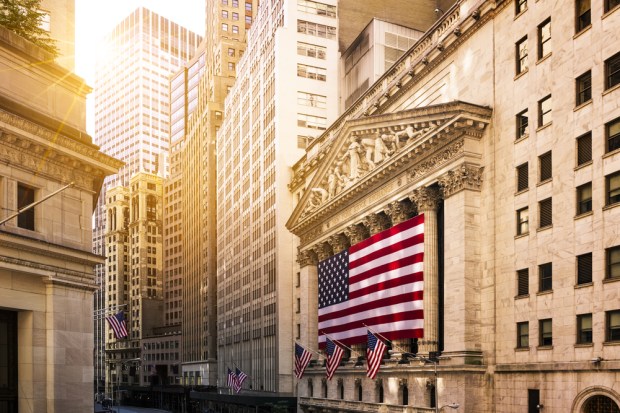Behind the Stock Slump and Trump Trade Uncertainty

If there is one thing Wall Street hates it is uncertainty. And investors hate uncertainty about uncertainty even more.
The Dow Industrial Average plunged 1.8 percent Wednesday, and we know that there’s debate over the direction in which the Trump administration is headed amid any number of controversies.
Regardless of where you might stand on the president, or his policies, or where Congress might wind up terms of legislation on banking, infrastructure health care and beyond, it is fair to say that a sizable amount of uncertainty has been introduced into the markets.
But when it comes to banks and the financial services industry, Wall Street might not even know what to be uncertain about.
Consider the fact that right up until, about, oh, this week, the bank stock rally seemed bulletproof, with markets shares by and large touching new highs again and again, with double digit percentage gains since the November elections.
That rally had begun right after Trump was elected, in no small part with some support from the business community, especially in financial services, eager to see a rollback in regulations.
In fact, bank stocks recovered a momentary blip seen earlier this month when Trump said that he’d been looking at reinstating Glass-Steagall, which would separate banking from investment divisions and in effect help break up some of the bigger players on Wall Street.
But what banks and any students of the Hill know, the road between legislative promise and fulfillment is a long and winding road.
The president’s reach is constrained in part by the reach of executive orders while some issues, in this case, regulatory reform, lie within the purview of cooperation, where he must find common ground with the House and the Senate… and those legislative bodies must find common ground with each other. Easier said than done.
In the meantime, the Volcker Rule may be on the chopping block, as Fortune and other publications have noted that big U.S. banks want to be able to speculatively trade in markets with their own money, which presumably would help boost profits. That profit boost may get some torque if Trump and Congress get around to “cutting a lot out of Dodd-Frank,” as he’d promised in the past.
Now that initiative looks like a big if, and is where the uncertainty over uncertainty comes in.
Those investing with enthusiasm in the financial sector may have been looking for at least some reshaping of legislation that would allow for even better margins, coming on top of an earnings season that for companies like JPMorgan and Citi showed significant beats on the bottom line. And the anticipation of increasing earnings leads to, well, more activity by investors in the markets (witness the surges in trading revenues seen by investment banking units). But which side of the regulation bet should investors take? Glass-Steagall? Dodd-Frank?
What if the answer is none of the above?
Implied in the Dow’s downdraft, countered a bit, but by no means erased, by this morning’s positive opening, are a number of worries.
Elsewhere on the Hill, health care reform may or not really get done, and tax reform seems inert for now, as is the infrastructure spending plan. Each of these, ostensibly, would have led to some growth for the private sector. And without those tailwinds, the imminent Fed rate hikes that are to be a hallmark of 2017 seem less urgent. If those rate hikes are spaced out, the spread between on money lent and money on the (deposit) sides of bank’s balance sheets is not as high as it might be…which eats at profits, in turn stalling stocks and turning any rally’s tide.
